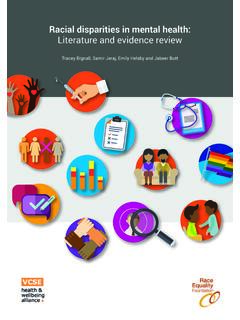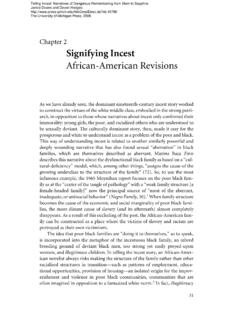Transcription of SUPPORTING TRANSITION FROM RECEPTION TO YEAR 1
1 Page 1 of 40 EARLY YEARS MATTERS LTD EMAIL: SUPPORTING TRANSITION FROM RECEPTION TO YEAR 1 (FOLLOWING BREAK IN SCHOOLING DUE TO COVID-19) Page 2 of 40 EARLY YEARS MATTERS LTD EMAIL: SUPPORTING TRANSITION FROM RECEPTION TO YEAR 1 (POST-COVID BREAK IN SCHOOLING) Prior to the outbreak of the Covid-19 pandemic schools and Ofsted were looking closely at issues around TRANSITION from EYFS into Key Stage 1.
2 Arguably, this was because it was clear that unless and until the divide between these two important stages was bridged children were losing out going from an informal and active approach to a more sedentary seat-based approach. This was further complicated by the fact that: RECEPTION and Year 1 teachers agreed that the vital, smooth TRANSITION from the foundation stage to Year 1 was difficult because the early learning goals were not aligned with the now-increased expectations of the national curriculum. (Ofsted, 2017). To date, due to the pandemic, much remains in abeyance and even the requirement to complete the EYFSP, has been suspended, leaving teachers with less information than ever as children who have completed less than two terms in RECEPTION classes prepare to move into Year 1 in September 2020.
3 A further and more complicated issue, is not only that children have missed out on vital schooling, but that they have done so in a period of uncertainty when adults, themselves are confused and fearful about the effects of the pandemic. This booklet is therefore intended to support EYFS and Year 1 leaders and teachers as they negotiate the normal TRANSITION questions and the new normal ones such as how to make up for lost learning time, how to manage resources, where to start, and so on. Ultimately it is intended to be a guide to ensure that good sense prevails the slowest way to the end of a race is not one where the runner is tripping and stumbling because of bumps in the road this booklet will hopefully avoid this by reassuring readers that Page 3 of 40 EARLY YEARS MATTERS LTD EMAIL.
4 The best way to achieve what we want is to be like the tortoise who beat the hare because, as he said: slow and steady wins the race! You may also wish to download one of the books about Covid-19 from the websites shown at the end of this document. Our knowledge of child development and of the curriculums should inform our practice as we prepare for TRANSITION . (EY Forum, 2019) What is the Early Years Foundation Stage? It sets the standards for learning, development and care of children in childcare, nursery and RECEPTION classes.
5 It is based on seven areas of learning and development. Each area of learning and development must be implemented through planned, purposeful play and through a mix of adult-led and child-initiated activity. What is Key Stage 1? Key Stage 1 is for children aged 5-7 years. The National Curriculum sets the standards that all schools must follow. There are 3 core subjects plus 8 Foundation subjects together with RE & PSHE Page 4 of 40 EARLY YEARS MATTERS LTD EMAIL: Comparison between the EYFS and KS1 Curriculum Early Years Foundation Stage Curriculum National Curriculum Key Stage 1 Personal, Social & Emotional Development Personal, Social & Health Education (PSHE).
6 Citizenship Communication and Language Literacy English Mathematical Development Mathematics Understanding the World Science, History, Geography, Design & Technology, Computing, Religious Education Physical Development Physical Education (handwriting) Expressive Arts & Design Art and Design, Music Page 5 of 40 EARLY YEARS MATTERS LTD EMAIL: TRANSITION Any TRANSITION can have a dampening effect on performance just ask anybody who has started a new senior role to find out how their confidence dipped at the start before rising once they found their feet.
7 That is what normally happens when children move from the RECEPTION class into a Year 1 class however in September 2020 that situation will be more complicated because children may have missed as much as a term or more of their usual school experience. So, where does that leave them, their parents and their teachers: a long way from normality. New Normal In this new normal where the RECEPTION year is incomplete there is a danger that anxiety could drive practice - so it is important to focus on positives as well as addressing concerns such as what children have missed out on.
8 All children will have grown and developed physically and those who have had access to outdoor space may have developed skills such as bike riding, running, jumping or kicking a ball. Others may have developed their IT skills and will confidently find YouTube clips or be able to play games on a tablet. So, some new skills will have been learned and there will be some maturation of physical skills such as balancing but, of course these do not make up for knowing all the Phase Three (Letters and Sounds) or being able to double, half and share different quantities.
9 HOWEVER, this period of time is unprecedented and everything after this will be different in terms of how to approach teaching it will be impossible to carry on as normal! Therefore, it s really helpful to consider our priorities so that we negotiate this tricky patch carefully. Page 6 of 40 EARLY YEARS MATTERS LTD EMAIL: Aims and Principles of Smooth TRANSITION We know from research that TRANSITION can be made less daunting if teachers and parents work together and that when they do, this has a positive impact on children .
10 Below are some of the shared aims and principles that will shape a smooth TRANSITION from EYFS to Year One: Ensure that we retain the best of EYFS practice, recognising that Key Stage One is different Making the change from EYFS to Year One practice at a pace that is not too quick so that children continue to feel confident, secure and successful Taking account of all information that is shared so that children s needs are understood, particularly vulnerable children or those with additional needs Engaging parents in the process so that they know what to expect and can support their children by talking to them about the changes SUPPORTING a gradual change in teaching styles from more informal to more adult-led teaching Focusing on the ways different children learn recognising that some children may prefer to work in different ways Recognising that effective teaching and learning for 5-7 year olds should be based on what is known about how young children






